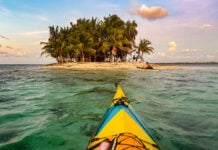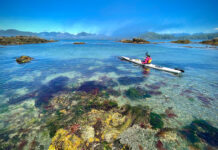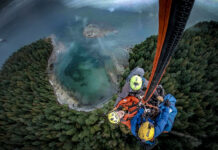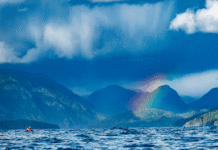In September 2019, the United States government finalized plans to allow oil and gas drilling in the heart of Alaska’s Arctic National Wildlife Refuge. The Refuge is a 16-million-acre mountain and coastal wilderness tucked in the northeastern corner of the state, nestled between the peaks of the Brooks Mountains and the icy Arctic Ocean.
Dozens of rivers flow north from the mountains, through coastal plains and empty into the Arctic Ocean. It’s a paddler’s dream. It’s also home to an estimated 7.7 billion barrels of oil, which has made it a hotly contested area since first receiving protection in 1980.
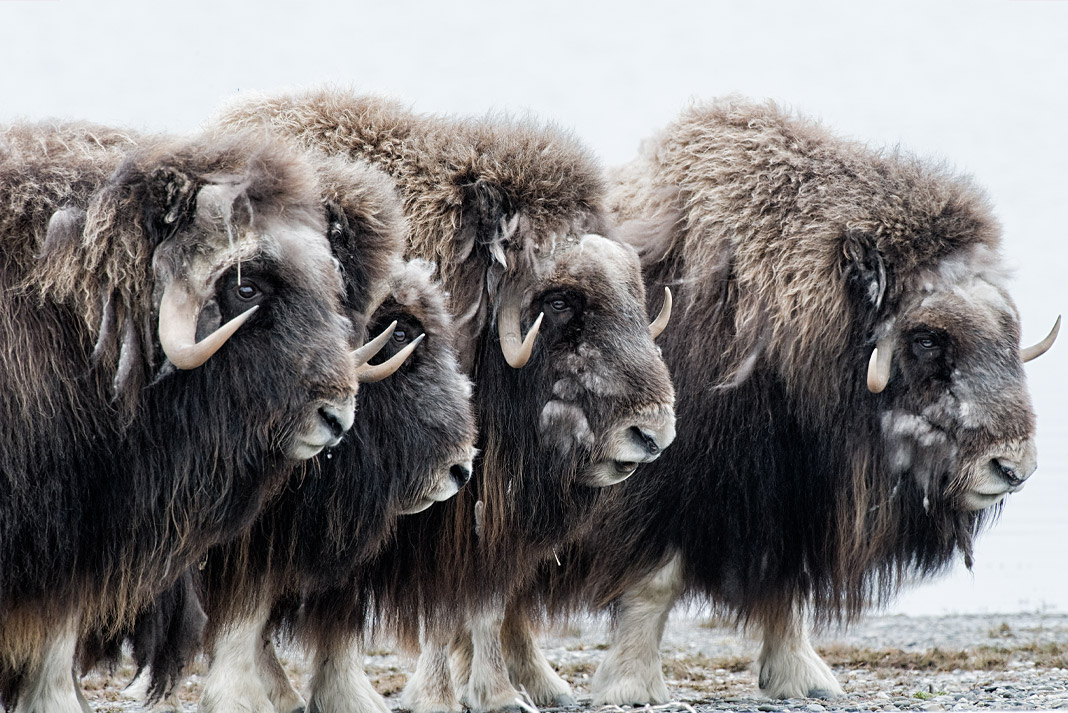
I’ve been lucky to paddle the coastline of the Refuge during two month-long trips in short Arctic summers. Once in a folding sea kayak and once in a folding canoe. In between dodging shifting ice flows and grizzly bears, I saw an abundance of wildlife like I’d never seen—and I’ve been paddling in the Arctic for more than 25 years. Caribou herds span the horizon, migratory birds gather from six continents, and I’ve even caught a glimpse of elusive wolves and lynx.
While paddling in a haze of white fog, which is so defining of this Arctic Ocean landscape, we spotted seven small black dots on a spit in the distance. This kicked off a heated debate as to whether the black dots were a herd of musk oxen or eider ducks. Without trees or structures, we lacked reference to give perspective to their size. If they were ducks, it would take us 20 minutes to paddle to the spit. If they were musk oxen, we would be paddling for an hour and a half.
I’m glad it was a long paddle.
There are less than 300 of the shaggy creatures calling the coastal plain of the Refuge home. This prairie landscape interspersed with thousands of small ponds also serves as the calving and nursing grounds of the 200,000-strong Porcupine Caribou herd. The herd’s range extends into Canada’s Yukon and Northwest Territories (NWT), and twice a year the herd journeys 1,500 miles on the world’s longest on-land migration. It’s the only Canadian barren-ground caribou group not in a drastic decline but is at risk of disturbance from oil and gas development.
The Gwich’in First Nations people of the Yukon, Alaska and NWT have depended on the caribou for their physical and cultural sustenance for thousands of years. They are caribou people and have spent the past 40 years fighting for the protection of these calving grounds. Gwich’in elders and caribou biologists believe development in this sensitive area is a threat to the survival of the caribou. For the Gwich’in, this is more than an environmental issue—it is also a human rights issue with their way of life at stake. The Gwich’in and conservation groups continue to fight for the Refuge’s protection, lobbying oil companies to withdraw interest from the area and hoping for a new president in 2020, who may revert the Arctic National Wildlife Refuge into a refuge for wildlife once more.
Peter Mather is a fellow in the International League of Conservation Photographers and a long-time contributor to Paddling Magazine.
Is the future of the Arctic National Wildlife Refuge the future of Alaskan oil? | Featured photo: Peter Mather



